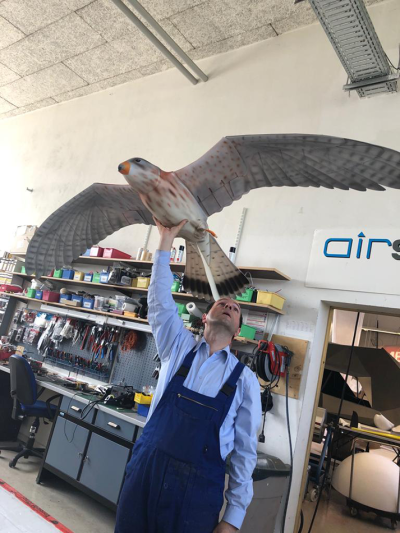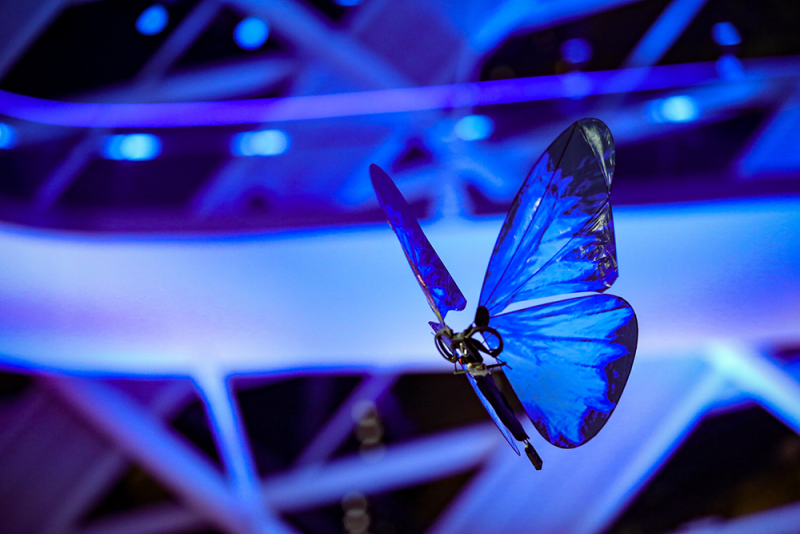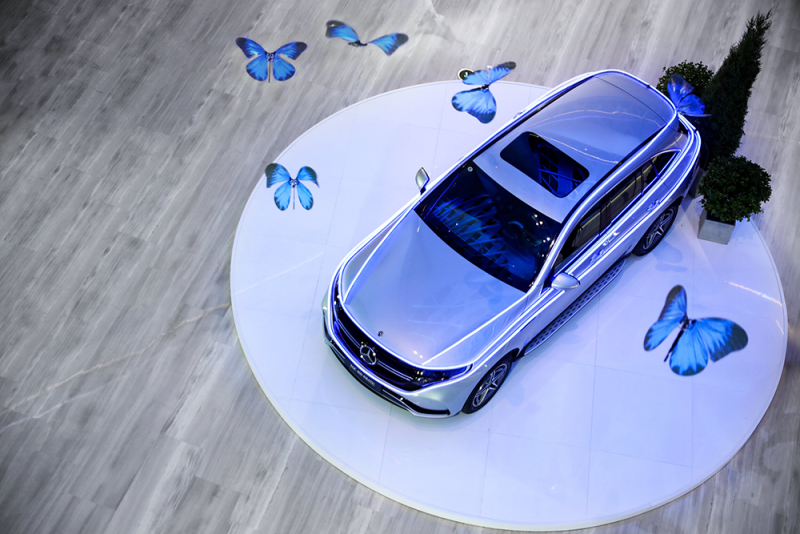In April, jam band Phish caused some of its fans to question reality when a whale and some dolphins took flight and swam over the audience and stage during a show at Madison Square Garden. It was a stunning design element from Moment Factory, and the most high-profile use of choreographed dirigibles, although the remote-controlled balloons have been around for 20 years and are an increasingly common sight at product launches and marketing events.
Based in Europe, Airstage designs and manufactures bespoke flying elements, including sea creatures, UFOs, and even cars, and rents them for events all over the world—complete with a pilot. Live Design spoke with John R. Barker, head of sales at Airstage, about these "slow flying" show elements.
Live Design: Where did the idea come from to create these flying elements?
John R. Barker: The ideas come from our head creative and CEO Rainer Mugrauer, inventor of "slow flying" for air entertainment, who designs all of the flying elements for our clients' varied concepts and requirements.
LD: Airstage describes the elements as radio-controlled dirigibles, so essentially this is a mechanized balloon?
JRB: The dirigibles are helium-based radio controlled flying objects and are constructed using inflatable skins, molded lightweight bodies or hybrids of both technologies.
The molded body versions have an exact fitting interior skin that is filled with helium to give them the necessary lift.
LD: Let's take the whales and dolphins you have in your rental inventory, what are the dimensions and flying times?
JRB: For the whale:
- Length: 8 m (26 ft)
- Cruise speed: 2,5 m/sec (8 ft/sec)
- Flying weight: 800 g (28 oz)
- Flight time: around 10 minutes on a fully charged battery
For the dolphin:
- Length: 3 m (9,8 ft)
- Cruise speed: 1,5 m/sec (5 ft/sec)
- Flying weight: 100 g (180 oz)
- Flight time: around 15 minutes on a fully charged battery
LD: Is 15 minutes the maximum an element can stay airborne?
JRB: It all depends on the size of the object and the weight/size of the rechargeable battery we can attach to it. The battery must power the propulsion units, radio control system, avionics and interior LED lighting, so flight times vary between 10 minutes and 45 minutes.

LD: I see that each dirigible rental comes with a pilot. Can the balloons be pre-programmed to fly without one?
JRB: We are also specialists for autonomous control systems. Using optical or UWB tracking and a flight control computer, we can fly multiple dirigibles or bionic objects through a pre-determined flight path or execute control parameters such as flocking, swarming or even responding to crowds or participants. These autonomous control systems are especially useful for our installation projects where the aerial performance is required to run over several months or even years. A recent example would be the Anika Yi Hyundai Commision at the Tate Modern Museum in London last year that ran constantly throughout the day for 3 months.
LD: It looks like you rent the dirigibles for up to 10 days. Would you supply them for a longer tour?
JRB: We generally aim to limit the hire period of our rental objects due to the constant high demand for them at marketing events, tv shows, opening ceremonies, etc., however most of these one-off events are shorter hire periods.
For longer periods such as tours, we construct custom-made flying objects and train the local crews how to operate them and perform the necessary servicing. We can also provide an Airstage technician to accompany the complete tour as required.
LD: Why don't you allow the dirigibles to be flown outside?
JRB: When filled with helium the "operating weight" of the dirigibles is only a few grams so any light wind would render them uncontrollable. However, in some cases, outdoor flying can be possible with dedicated dirigibles and bionic objects in enclosed spaces such as covered stadiums.The possibility of operating in such venues has to be determined on a case-to-case basis. Due to their lighter-than-air technology, our dirigibles are not subject to any of the stringent safety restrictions imposed upon drones, so can be safely flown over both performers and audiences alike.
LD: What are some of the most challenging projects you have worked on with these dirigibles?
JRB: The nature of our business and the high percentage of prototype work involved in each project ensures that we are challenged almost on a daily basis.
One of the biggest challenges is finding a consensus between the client's creative ideas and the "rules of physics" in aerial engineering.
We can solve most problems - but physics ultimately defines our boundaries!
LD: How long does it take to create a custom dirigible?
JRB: A radio controlled penguin takes around 10 days to construct whilst a molded body 1:1 scale model of a flying car with functioning front and rear lights will take around 2-3 months.
LD: What does a lighting designer need to know about these elements? Is the skin transparent and light must be kept off it? Are they reflective?
JRB: The skins are either translucent or opaque and made from specially developed highly flexible, extremely lightweight polyester films that are impenetrable by helium gas.
The molded bodies are constructed using extremely light polyurethane foam, which—thanks to its particularly fine fiber structure—can be molded and shaped to any imaginable form, then painted as required.
The opaque skins and of course the molded bodies do not allow the audience to see the interior of the flying models and can be either airbrushed or printed with graphics. Luminescent coating is also possible.
We can incorporate programmable RGBW lighting that is then controlled from the lighting desk. It is also worth noting that some of our dirigibles can be fitted with a miniature camera system and sender that broadcasts a live video feed.
LD: What new and exciting things are coming next?
JRB: We are planning to develop more advanced versions of the whale and other creatures that incorporate moving mouths, side fins, interior lighting and even Beluga Whales that can puff out "smoke ring bubbles."
There are a myriad of possibilities on the horizon that we hope will be available in ultralight versions soon, such as "invisible" impeller propulsion units, miniature wireless chargers, OLED screens, loudspeakers, etc.
I'm sure our R&D department will ensure that we continue to incorporate the latest cutting edge technology - be it from our suppliers or own in-house developments - into our products.
We are confident that our next generation of bionic flying objects and dirigibles will continue to Wow audiences worldwide - true to our claim of the last 20 years "We make it fly!"
LD: Airstage also designs and manufactures "bionic flight projects" how are these different from the dirigibles?
JB: Bionic flight is achieved by mimicking the original object using complex ultralight mechanical engineering. There is no helium involved; a bionic bird or butterfly flies solely by flapping its wings in the exact same manner as the original.
The bionic flight objects all originated from our R&D department. As leading providers of flight solutions, around 30% of our work is on R&D projects for government agencies, universities, research institutes and private companies.
We have won several awards in this field and probably some of our best known work has been as part of the Festo Bionics Network (under the name Effekt-Technik GmbH).

